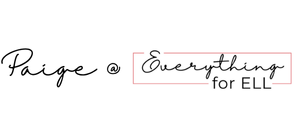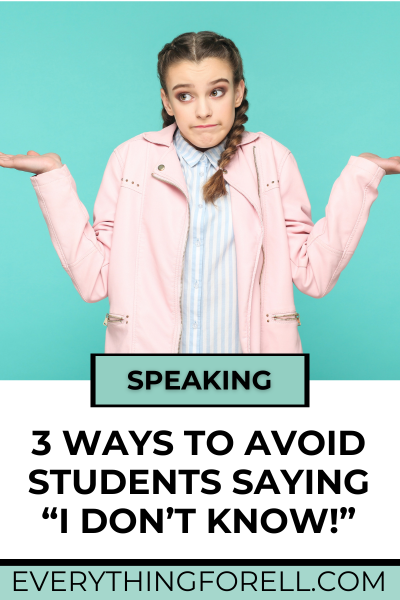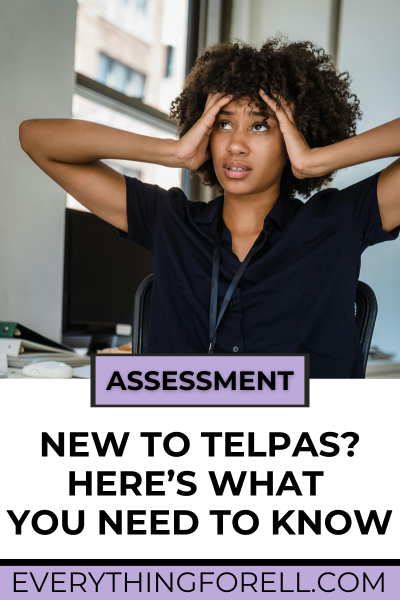How many times have you asked a student a question, and they look at you, shrug, and say…
“I don’t know.” 😬
Your ESL classroom is silent. Maybe another student snickers. And here is the deal: you KNOW this student can answer the question. You WANT this student to shine.
If you teach beginner or intermediate ESL students, this moment is all too familiar. Students often freeze, not because they truly don’t know, but because they either lack the confidence or the language to respond.
The good news? There are three simple strategies you can use to help students transition from silence to speaking.
1. Give Students a Path to the Response

Sometimes, “I don’t know” is simply the truth. A couple of years ago; however, I decided that I wouldn’t accept that answer. Let’s imagine I ask, “How does the character feel?” and the student I call on responds, “I don’t know.”
🔊This strategy sounds like:
- “You don’t have to be correct, but what is your guess?”
- “I want to hear your guess, but you can call on a friend to help you, too.”
- “Ok, take a minute to think about it. I’ll come back to you.”
- “Let’s have someone read paragraph 5, and I’ll ask you again.”
💡 Classroom Tip:
Embrace the awkward silence and the wait time as students think or read. The first weeks can feel rough, but with consistency, your class will soon be more attentive and engaged when they realize ‘I don’t know’ isn’t an option.
2. Use “Turn & Talk” Before Calling on Students
Sometimes “I don’t know” comes from putting students on the spot too quickly. A simple strategy is to give them a turn and talk, which blends the idea of giving them a minute to find the answer and involves other students to help.
🔊This strategy sounds like:
- “Everyone, point to paragraph 5. I want you to read it again. Take a few seconds to think about how the character feels. Then, talk to your elbow partner. Student will let us know what he and his partner think.”
💡 Classroom Tip: Pair students next to others who do not speak their native language, if possible. If not, pair them high-low and give the low student the win.
3. Visual Supports: Transform Your ESL Classroom
Sometimes “I don’t know” comes from a lack of language. This is why providing TRS (total response signals), speaking stems, or having “What to Say Instead of I Don’t Know” posters are so important.
🔊This strategy sounds like:
- “Does the character feel good [thumbs up] or bad [thumbs down]?”
- “Let me help. Say, ‘I think the character feels…’”
- “Look at the board. Choose one of our speaking stems to help you.”
💡 Classroom Tip:
Hang “What to Say Instead of IDK,” posters on your walls or put them on student desks. After a few weeks, students will start using them automatically.
If you don’t have these posters, I made some for my classroom. My posters include:
- 6 editable sentence frames in Canva, so you can change colors and fonts.
- Fill-in-the-blank prompts to help students form their responses.
Whenever a student says “I don’t know,” I can point to the posters, and they instantly have a way to respond.
👉 Grab the posters here for just $2 and get your students talking!
What Did I Miss?
What do you do when your students say, “I don’t know”? I am sure I missed some strategies, so please share what works for you in the comments.
If you’re ready to turn “I don’t know” into confident English responses, start with these strategies and try the posters with your class this week.
They’re an easy, low-prep way to help students speak up, and they cost less than a cup of coffee!
👉Be sure to check out other simple strategies for EB students in my blog!














